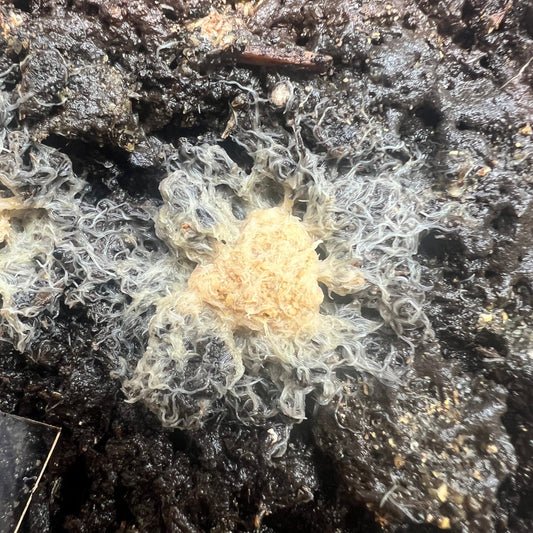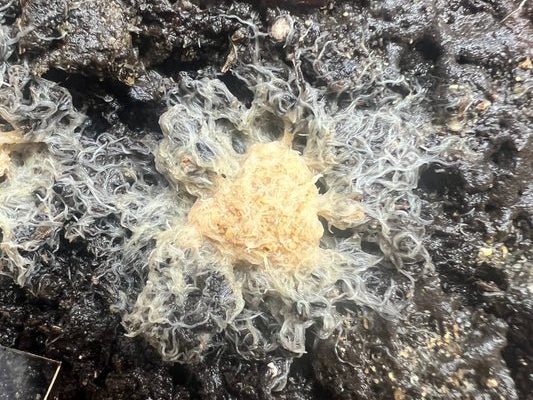
Grindal worms are a type of enchytraeid worm—basically, they’re relatives of earthworms but much smaller. They thrive in damp environments and are particularly popular among fish keepers because of their high protein content and ease of cultivation. Imagine having a mini farm right in your home, where you can produce nutritious food for your aquatic friends. Let’s dive into how these tiny creatures feed and why it’s crucial to understand their mechanism.
What Are Grindal Worms?
Before we get into their feeding habits, let’s take a step back and familiarize ourselves with Grindal worms. These worms typically measure about 1–4 inches in length, making them perfect for feeding to smaller fish and young fry. Their appearance is quite similar to that of earthworms, but with a more delicate, slender body. They thrive in moist, organic material, often found in compost or decaying leaves.
Grindal worms prefer temperatures between 60°F and 80°F, which makes them reasonably easy to maintain in a home setting. You might be wondering how these worms are distinct from other types of feeder worms, like blackworms or white worms. The key difference lies in their size and nutritional profile. Grindal worms are not only smaller but also have a better protein-to-fat ratio, making them a healthy food source for your pets.
The Basics of Their Feeding Mechanism
Grindal worms feed by ingesting organic matter from their environment, which includes decaying leaves, plant roots, and other decomposing materials. They utilize a method called filter feeding, where they effectively sift through their substrate to extract nutrients. You can think of them as tiny vacuum cleaners, pulling in sediment and extracting what they need to survive.
Their feeding mechanism allows them to play a vital role in the ecosystem by helping to break down organic materials. This not only nourishes them but also helps enrich the soil, benefitting plant growth. For aquarium owners, understanding this process allows you to create a mini-ecosystem that mimics their natural habitat, ensuring your worms thrive and produce a steady supply of food for your fish.
What Do Grindal Worms Eat?
As mentioned, Grindal worms are not picky eaters. They thrive on a diet rich in organic matter. Here’s a brief rundown of their favorite foods:
- Decaying plant material: This includes leaves and rotting fruit, which are easily digestible and packed with nutrients.
- Compost: Worms love compost because it’s rich in nutrients, having broken down various organic waste.
- Commercial worm feed: If you’re raising them at home, you can purchase specialized feeds designed to provide balanced nutrition.
Providing a diverse diet ensures they remain healthy and nutrient-dense, which translates to better food for your fish. You might be wondering how to ensure a good feeding environment. Keeping their substrate moist and adding fresh organic matter regularly can help keep your Grindal worms happy and healthy.
How to Maintain a Feeding Habitats for Grindal Worms
Maintaining a feeding habitat for Grindal worms is straightforward but requires attention to detail. It’s like setting up a cozy corner in your home to keep these worms thriving. Here’s a step-by-step guide:
1. Choose a Container: Use a shallow tray or container that allows airflow while retaining moisture. A plastic tub with drainage holes can work well.
2. Add Substrate: Fill the container with a mix of peat moss, soil, and decaying leaves. This will serve as their feeding and breeding ground.
3. Moisten the Environment: Keep the substrate damp, but not soggy. Mist the container occasionally to maintain moisture levels.
4. Feed Regularly: Add your chosen organic matter or commercial feed weekly. Remember, too much food can lead to mold, so be moderate.
5. Monitor Temperature: Keep the environment between 60°F and 80°F. If your home is a bit chilly, you might need to use a small heating pad.
By following these steps, you create an ideal habitat for your Grindal worms, promoting healthy growth and reproduction.
Benefits of Feeding Grindal Worms to Your Pets
So, why should you consider Grindal worms as a food option for your fish or reptiles? Here’s the deal: these worms are not only nutritious but also offer several benefits:
- High Protein Content: Grindal worms are typically 40-50% protein, making them an excellent energy source for growing fish.
- Natural Behavior: Offering live food encourages natural hunting instincts, which can lead to happier and healthier pets.
- Easy to Cultivate: With the right conditions, you can maintain your own supply of Grindal worms without too much hassle.
When you feed your pets Grindal worms, you’re not just filling their bellies; you’re also enriching their lives and ensuring they get the nutrients they need to thrive.
Common Problems and Troubleshooting
Even with the best intentions, things can sometimes go wrong when raising Grindal worms. Here are a few common issues and how to solve them:
– Mold Growth: This is often a result of overfeeding or excess moisture. Try to balance the amount of food you offer and ensure proper airflow in the container.
– Low Reproduction Rates: If you notice fewer worms than expected, consider checking your habitat conditions, especially temperature and moisture levels. Adjusting these can often reignite their breeding cycle.
– Worm Death: If your worms are dying off, it could be due to extreme temperatures or poor substrate conditions. Regularly change the substrate and maintain optimal living conditions.
Doing a bit of troubleshooting can help you turn things around for your Grindal worm colony, ensuring a steady supply of food for your pets.
Final Thoughts
Understanding the feeding mechanism of Grindal worms opens up a world of opportunities for pet owners. These little worms are not just a food source; they’re a vital part of a sustainable feeding cycle that can enhance the health of your aquarium or terrarium. By providing the right habitat, diet, and care, you can cultivate a thriving colony of Grindal worms that helps keep your fish healthy and happy.
So, the next time you’re setting up a feeding strategy for your aquatic friends, remember the humble Grindal worm. With a little care, they can be a game-changer in your pet care routine!

